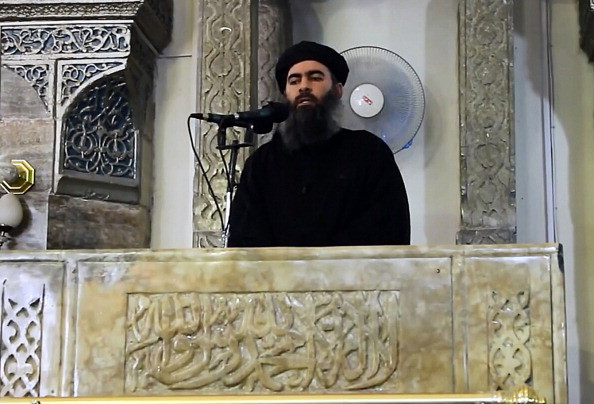In the News
Trump: ISIS Leader al-Baghdadi Killed in US Military Raid
Washington,
October 27, 2019
President Donald Trump confirmed Sunday morning that ISIS leader Abu Bakr al-Baghdadi was killed in a US military raid in northwest Syria over the weekend. "Abu Bakr al-Baghdadi is dead," Trump said at the White House. The President said a US special operations forces mission went after the ISIS leader and there were no US deaths during the mission. The President said "immediate" and "totally positive" test results proved it was al-Baghdadi. A senior administration official said earlier Sunday that Trump approved the mission aimed at targeting ISIS leader Abu Bakr al-Baghdadi in a US military raid in northwest Syria. No US service members were killed in the operation. CNN reported early Sunday morning that al-Baghdadi was believed to have been killed in the raid, according to a senior US defense official and a source with knowledge. The final confirmation was pending while DNA and biometric testing is conducted, both sources told CNN. The defense official said it appeared that al-Baghdadi detonated a suicide vest during the raid. The raid was carried out by special operations commandos, a source familiar with the operation told CNN. The CIA assisted in locating the ISIS leader, the defense official said. Al-Baghdadi became the leader of Islamic State of Iraq (ISI) in 2010. In 2013, ISI declared its absorption of an al Qaeda-backed militant group in Syria and al-Baghdadi said that his group would now be known as Islamic State in Iraq and the Levant (ISIL or ISIS). Al-Baghdadi has been in hiding for the last five years. In April, a video published by the ISIS media wing al-Furqan showed a man purporting to be al-Baghdadi. It was the first time he had been seen since July 2014, when he spoke at the Great Mosque in Mosul. Feared preacher of hate Baghdadi, the leader of the terror group, is believed to have been in hiding for the last five years. In April, a video was published by the ISIS media wing al-Furqan that showed a man purporting to be Baghdadi. It was the first time Baghdadi had been seen since July 2014, when he spoke at the Great Mosque in Mosul. A report in 2015 claimed he was badly wounded -- even bedridden -- by a US strike, yet the Pentagon never confirmed this injury. More reports suggested he was wounded again in 2017, as US-backed and other forces closed in on ISIS' territory in Syria. In February 2018, several US officials said Baghdadi had been wounded in an airstrike in May 2017 and had to relinquish control of the terror group for up to five months because of his injuries. Baghdadi became the leader of Islamic State of Iraq (ISI) in 2010. In 2013, ISI declared its absorption of an al Qaeda-backed militant group in Syria and Baghdadi said that his group will now be known as Islamic State in Iraq and the Levant (ISIL or ISIS). Later that year Baghdadi's followers first swept into Raqqa. That began their ambitions in Syria, and led in June 2014 to the establishment of what they called an Islamic "caliphate," never short of ambition, but rarely showing enough sobriety or statehood to last for very long. They had rules, an army, and briefly a currency, yet just over three years later were reduced to fighting for scraps of Mosul in Iraq and the object of a large offensive against their de facto capital in Raqqa. ISIS' control of Mosul crumbled in July 2017, when Iraqi Prime Minster Haider al-Abadi declared that troops had recaptured the metropolis. CNN News
|

